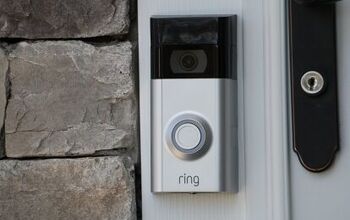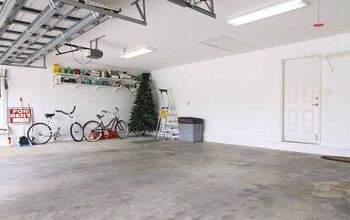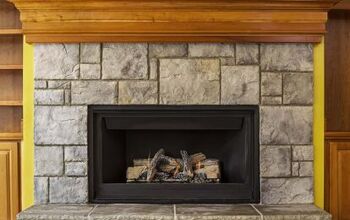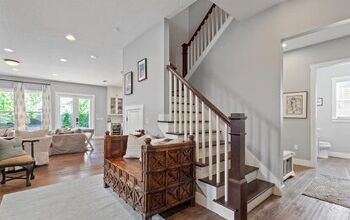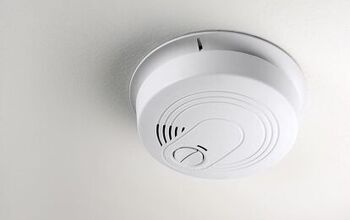How To Increase Natural Light At Home

There’s no better time to make your house feel more lively than in the fall and winter. It’s no secret that many homeowners get stir-crazy and miss the warmth and vibrancy of the sun during cold weather. That’s why you may understandably wonder how to increase natural light at home.
You can increase natural light at home with strategically placed mirrors, light furniture, and glossy paint. Install sheer curtains or uncover your windows during daylight hours to maximize natural light in a room. Avoid obscuring windows with furniture, and prune trees and shrubs outside your home to ensure you don’t block sunlight.
Shiny tiles and reflective finishes can help you get more mileage out of the light that shines through your windows. Follow along as we explore how to increase natural light at home.
How To Increase Natural Light In A Room
1. Put In A Skylight
Skylights date back to ancient Rome, and they have helped increase natural light in countless homes and buildings since. Installing a skylight in your home requires a minor, inexpensive renovation that costs an average of $1,770. The cost varies based on the dimensions, materials, and labor fees.
Skylights are arguably more popular than ever as people look to add depth to their homes. Homeowners often install skylights in their kitchens and hallways to maximize natural light. However, you can install a skylight in any high-traffic area that doesn’t get enough sunlight.
Some people even install skylights in their bathrooms. Installation costs may seem high, but that’s because it takes a lot of work and materials. The process involves cutting through your roof, and it can take up to 3 days in some cases.
2. Use Mirrors Wisely
Increasing sunlight in your house is as simple as using a few mirrors. Reflecting sunlight lets you boost natural light at home without renovating. However, you must carefully consider the placement of your mirrors to maximize natural light.
Position mirrors across from the windows, skylights, or sun tunnels that get lots of sunlight. This lets you direct the light from your existing natural light sources. It takes some experimentation, as you may have to adjust the position of the mirrors a few times.
For example, it helps to observe where sunlight shines through your windows throughout the day. The position of the sun determines where its rays will shine depending on the time of day. Feel free to get creative and place mirrors across from one another to reflect as much light as possible.
3. Install A Sun Tunnel
Sun tunnels may not be as common as skylights, but they are effective in homes without enough natural light. Like skylights, sun tunnels help fill homes with light from the outside with minimal construction. A sun tunnel is a unique variant of a skylight that magnifies and reflects sunlight.
Sunlight enters a dome through your roof and is reflected and diffused through a tunnel in your ceiling. This is a great way to get more natural light in a room without making it hotter. Some homeowners prefer sun tunnels over standard skylights because they don’t have a large affect on the temperature.
The intensity of the light that shines depends on the tunnel’s length and pitch. Installing a sun tunnel costs an average of $625, or up to $2,300.
4. Apply Light-Hued Paint
The color of the paint on your walls can affect how well sunlight reflects throughout your home. That’s especially true in rooms with lots of windows and mirrors. Light shades of gray, blue, yellow, cream, and white help reflect natural light.
You can use light paint to your advantage in rooms with north-facing windows. This can also save money on your electric bill as you won’t need to turn the lights on nearly as early. Light paint can also help regulate your circadian rhythm and make a room feel bigger.
5. Choose A Glossy Paint Finish
Many homeowners are torn between matte finishes and glossy finishes. Matte finishes look great, but they absorb much more light than they reflect. A glossy finish is the best option if you want to reflect sunlight to boost natural light at home without renovating.
However, you must be careful not to choose an overly glossy finish. Glossy finishes can sometimes reflect light too strongly, creating a distracting glare that can become uncomfortable.
Be careful when choosing a glossy finish for walls near a television and computer. For example, the glossy paint may reflect light from a window onto the TV screen and create a glare. Similarly, the TV's glow may reflect off the paint and shine into your eyes.
6. Install Glass Tile
Glass tile is stylish, sleek, and reflective enough to brighten your home. This is a popular kitchen backsplash option, and glass tile also works well in bathrooms and on accent walls. It is reflective enough to replace the need for overhead lights and lamps in rooms with enough natural light.
You can expect to spend $18 to $42 or more per square foot to install a glass tile backsplash. This is a relatively inexpensive project if you don’t plan to install a huge backsplash. You can get the most out of your glass tile backsplash if you uncover nearby windows and use light-colored paint and furniture nearby.
7. Give The Windows Space
It’s tempting to push your furniture up near your windows to get the most out of the space in your house. However, doing so can minimize the range of sunlight that enters through your windows. Ideally, you should keep 3-6 feet in front of your windows clear to maximize sunlight at home.
Otherwise, the sun may cast light on furniture and decorations that absorb sunlight rather than reflect it. This, combined with clever mirror usage, can help you get more mileage out of the sunlight that enters your home.
8. Pick Light Furniture
Light furniture is just as helpful as light paint when it comes to increasing natural light at home. Look for light-coloured couches, chairs, and even throw pillows. Avoid dark furniture, such as black and dark gray, that will absorb light instead of reflecting it.
Today, you can even find comfortable couches with mirrored edges and ottomans to maximize natural light at home. Otherwise, you can strategically place mirrors across from your furniture to further reflect sunlight.
9. Consider Mirrored Ceiling Tiles
Mirrored ceiling tiles may seem like overkill, but they don’t have to be. You don’t necessarily need to replace all of your ceiling tiles with mirrored panels. Instead, pay attention to where natural light hits your ceiling.
Look for a tile or two that gets sunlight the longest during the day. Replacing such tiles with mirrored panels will let you reflect strong sunlight for hours each day. This is especially useful if you have a shiny, reflective floor beneath your ceiling.
You can install a mirrored ceiling tile for as little as $80-$110 without professional help. However, hiring a professional can easily add $100-$200 to the overall cost.
10. Keep Your Yard Neat
A neat, well-maintained yard can work wonders in brightening up your home. An overgrown yard with unkempt trees and shrubs can block sunlight that would otherwise shine through your windows. Avoid planting trees, bushes, and tall flowers too close to exterior walls and windows.
Otherwise, you may limit how much natural light enters your home. Routinely prune your trees, bushes, and flowers in your yard to maximize sunlight and provide a great view.
11. Uncover Your Windows
Finally, the easiest way to increase natural light at home is to uncover your windows. Blinds and curtains are great for privacy, but they also block light. The sun typically rises around 6:30 AM and sets right before 5:00 PM, so it’s best to uncover your windows between those hours.
You can also hang sheer curtains that don’t entirely block light. This is the best of both worlds, as they provide privacy without keeping the sunlight out.
Summing It Up
The best way to increase natural light in your home is to uncover your windows and choose light-colored paint and furniture. Set up several mirrors in rooms with lots of sunlight to reflect as much natural light as possible. Install a skylight or sun tunnel to add depth to a room and maximize natural light at home.
Related Guides:

Nick Durante is a professional writer with a primary focus on home improvement. When he is not writing about home improvement or taking on projects around the house, he likes to read and create art. He is always looking towards the newest trends in home improvement.
More by Nick Durante














